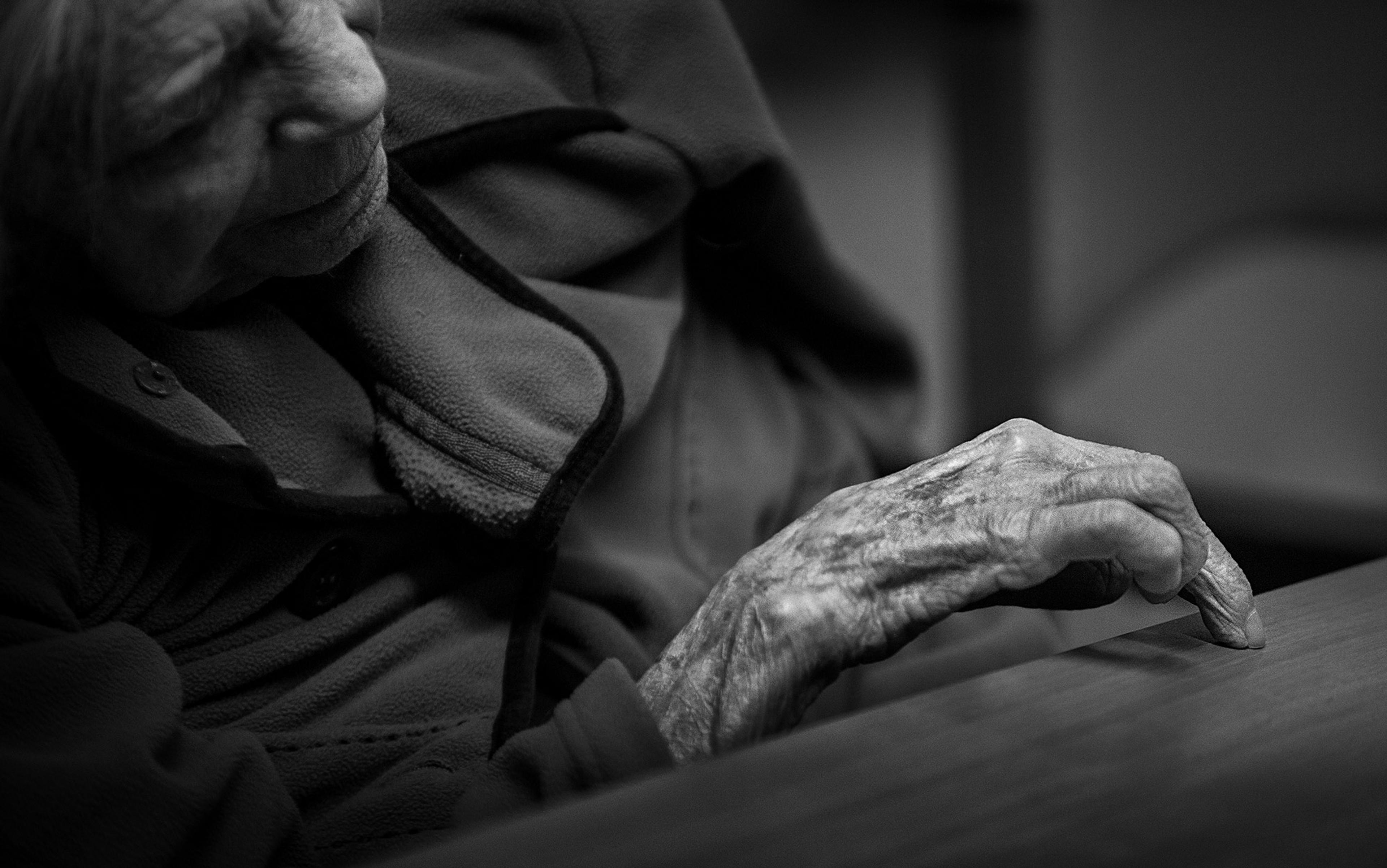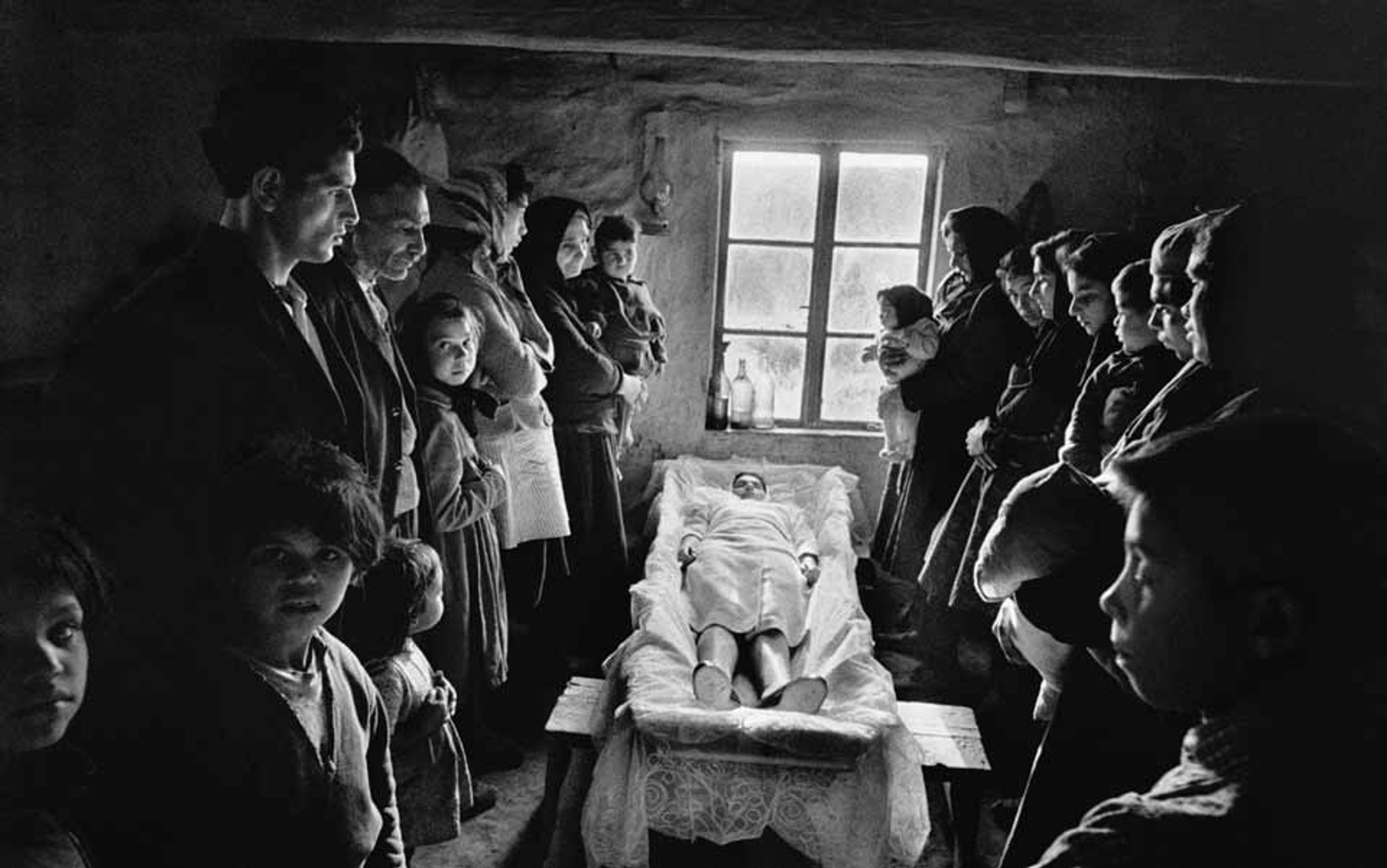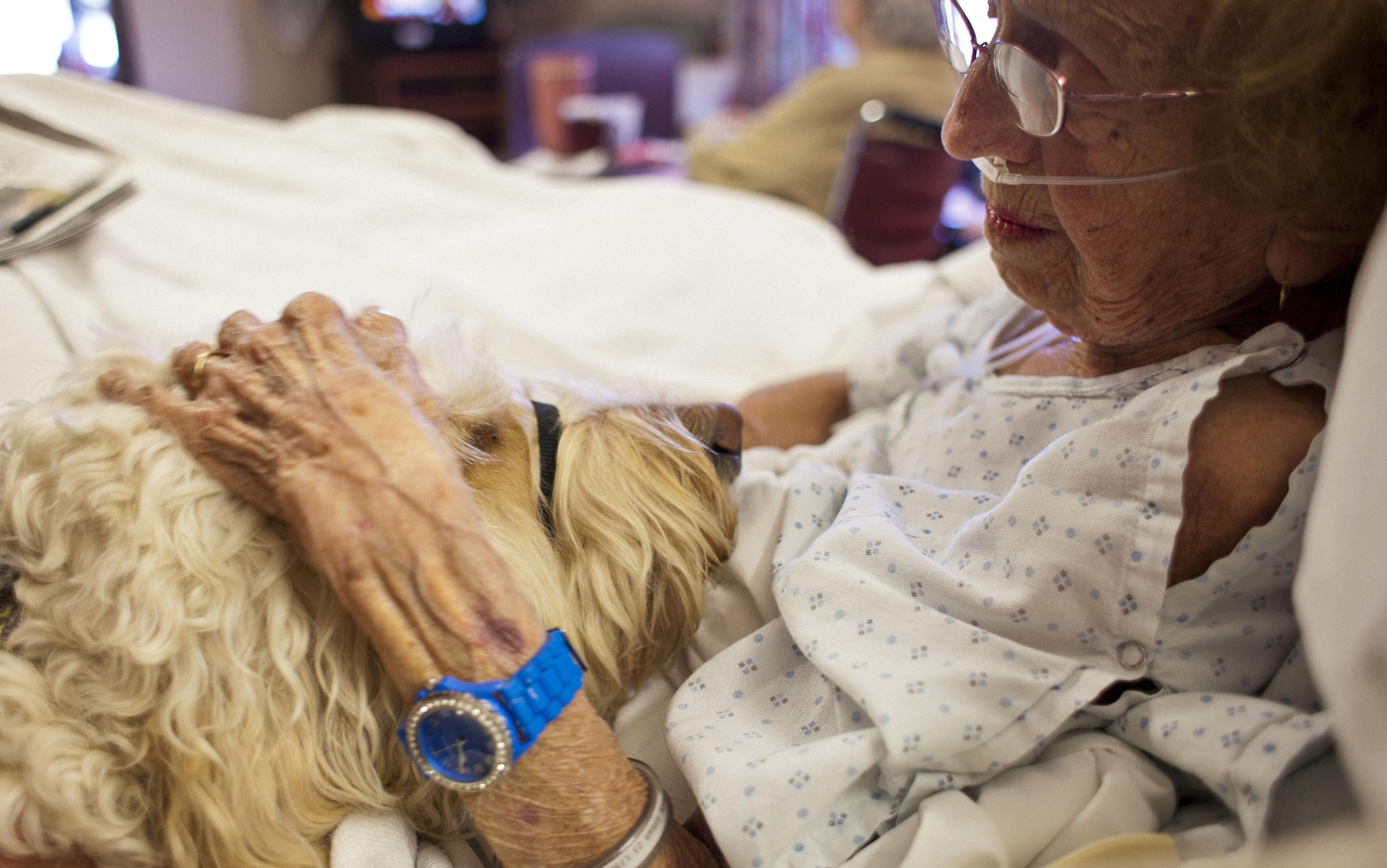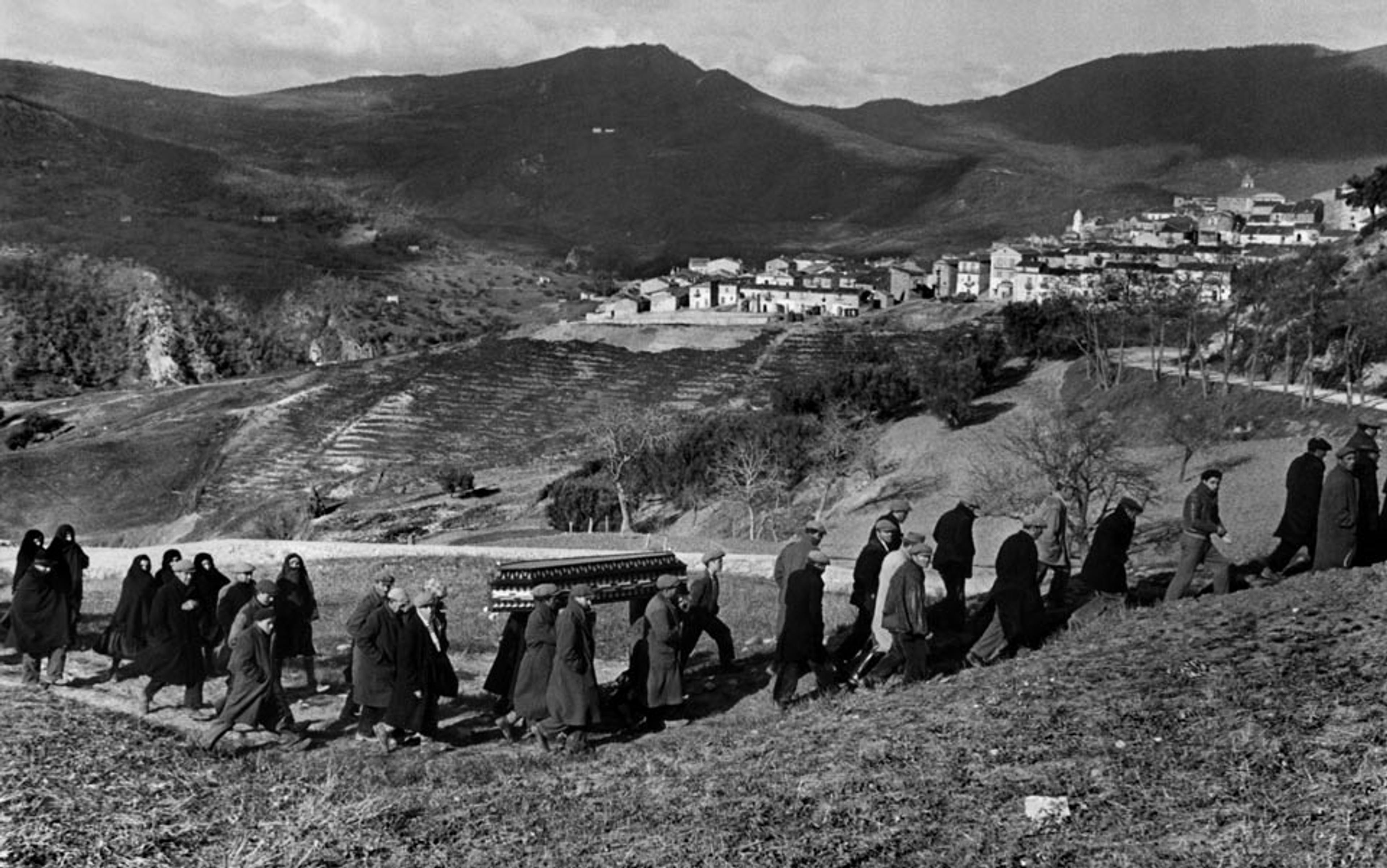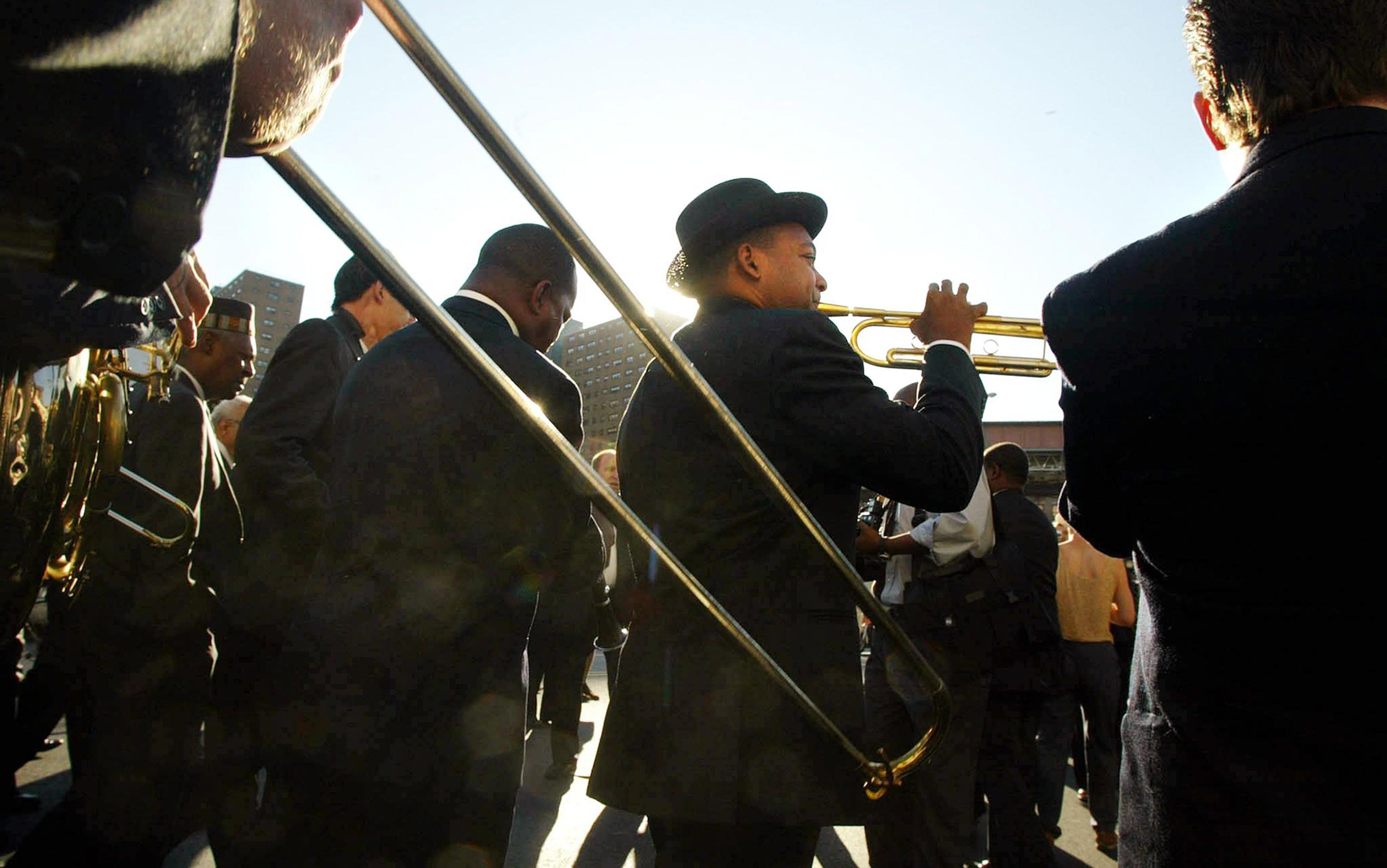Nurses rushed around the man in a blur of hyperactive clothes-changing and sheets-changing. He looked up. ‘It’s the cancer, you know. It’s spreading all around.’
He was talking to the only nurse in the room who wasn’t on duty. She was there to observe the workings of the hospice staff, as part of her research. But for this dying man, at this moment, she was simply there – open to a complex, precious mixture of commentary, invitation and request.
Two of the great 20th-century theorists of care for the dying urged people to be on the lookout for such moments. The psychiatrist Elisabeth Kübler-Ross, author of On Death and Dying (1969), encouraged family and medical staff to listen for the ‘implicit communications of dying patients’. The hospice care pioneer Cicely Saunders spoke about the need to attend to a person’s ‘total pain’: not just physical, but social, emotional and, yes, spiritual pain, too.
Such broad, nuanced forms of care as these are anticipated in the Scottish government’s report ‘Strategic Framework for Action on Palliative and End-of-Life Care’ (2015). The Framework aims to create a ‘culture of openness about death, dying and bereavement’, and to find ways of incorporating people’s spiritual and psychological needs into end-of-life care. But it also prompts the question: why, a generation after Kübler-Ross and Saunders, are such things being ‘called for’ as though they were new, unusual and brave? Why is spirituality not already a routine part of end-of-life care?
Partly, it is a problem of definition. It seems to be as difficult as ever to say precisely what spirituality is, and how it might feature in end of life care. In the public imagination, it remains stubbornly associated with religion: spirituality as religion’s private, inward dimension, the part that’s more about sensibility than belief. Elsewhere, spirituality is mangled by politics, conscripted as yet another marker of identity and difference – the now-classic ‘spiritual, not religious’ self-descriptor.
Mixed up with these various associations is a habit that spirituality has, in practice, of becoming separated from the rest of life. It is often defined against the rest of life. An atmosphere lingers around spirituality of hard-won insight and expertise, either so personal as to be essentially unshareable or else bordering on a kind of in-crowd esotericism. Few people faced with very little time left would regard spirituality of this sort as having much to offer.
Beyond providing work for sociologists, these problems of definition and praxis matter because they can obscure the valuable, impossible longing to which ‘spirituality’ is a response: a desire to reconcile symbolic identity – our intimate, narrative sense of ourselves and our loved ones – with physical identity. This idea of reconciliation is easily frustrated and even forgotten as a result of the often frenetic and confused ways in which we seek to meet it. But it is a deeply motivating need, and it will help us understand why the living and the dying alike struggle with ‘spirituality’.
For the pure woe and incredulity prompted by the apparent ‘dualism’ of our symbolic and physical identities, Ernest Becker in The Denial of Death (1973) found it hard to beat Jonathan Swift’s lines about a young man getting to know his love:
Nor wonder how I lost my Wits
Oh! Caelia, Caelia, Caelia shits!
Life is full of moments that provoke some combination of anxiety, revulsion and outrage, when we realise that our subtle, sublime inner world is hooked up to – even the other side of a coin from – perishable blood and bone and guts. Gently squeezing the sides of my baby daughter’s mouth to retrieve something she’s picked up off the floor, and doing the same not long after with a recently caught trout to retrieve a fish hook: why do I shudder a little noticing their upper palates looking so similar?
The technologies and preoccupations of a highly medicalised society provide their own provocations: uncomfortable visions of one’s own body, courtesy of ultrasound, CT scan or surgery under local anaesthetic; never-ending tests offering a narrative, at once portentous and devoid of solace-giving meaning, of our bodies as they teeter between health and disease. No wonder we value writers who bridge the physical and the symbolic, from Paul Kalanithi’s When Breath Becomes Air (2016), which recounts the young neurosurgeon’s experience of lung cancer from diagnosis through terminal decline, to Atul Gawande’s Being Mortal (2014), in which the surgeon explores the modern experience of death.
Patients facing death seek to come to terms with how they have spent their lives, making peace, if not with failing bodies then at least with the narratives they have built with them. They try to reach some new, last degree of understanding and closeness with others, finding the best possible – or least worst – place to put bookmarks in cherished relationships. Where the term ‘spirituality’, then, might leave hospice patients and staff cold or confused, the work of reconciliation with which ‘spirituality’ tries to be involved speaks to deeply human concerns.
Most of us will reach the end of life with the work of reconciliation – the symbolic with the physical – painfully incomplete. I suspect we know it. This is why ‘anticipatory grief’ is an important second element in spirituality, one that is again common both to the dying and to the living. This is where we grieve for the expected loss of a loved one in the near or unknown future, whether that be our own ‘self’ or someone else.
Anticipatory grief is perhaps best illuminated by adapting Kübler-Ross by trying to look at spirituality – in any form, and at any stage of life – as the ‘implicit communication(s) of a dying patient’. For all the upbeat intentions of meditation, prayer, reading or diary-keeping, along with general attempts to live in the world in a minimally offensive way, it starts to become difficult to shake the sense that much of the energy for all this is coming from three generators, whirring away deep in the basement: anger, denial and bargaining – three of Kübler-Ross’s five stages of dying, later adapted as stages of grief.
There is anger at the outrageous idea that at some point I will be gone. There is denial, both of the fact of my death and of the anger that the idea generates. And there is bargaining, with some rather hazily imagined personification or principle of justice, that a virtuous path of seeking answers – regardless of the outcome – will somehow keep me safe. Perhaps this is why bestselling books on spirituality are sold on the promise of journeys and fresh starts: not just because people are so often dissatisfied with life as they’re currently living it and hanker after change, but because the start is the point furthest from the end of a journey – the point at which that end is naturally at its least visible, and so most open to fantastical hope.
But what surprises me most when looking at spirituality in this way is how inextricably ‘being’ and ‘doing’ are bound up in one another. The rhetoric around spirituality is chock-full both of admonitions about just being – mindfulness, ‘presence’, ‘the now’, etc – and verbs that imply doing: reading or keeping a diary, planning and practising, setting time aside, behaving this way or that, how to sit and even what to eat. This relationship between ‘being’ and ‘doing’ is the third element of spirituality.
There is a certain amount of peace, compassion and forgiveness to be found in this zoomed-out perspective
To take a popular example, although during meditation itself people can experience real spaces of ‘just being’, in among the usual thicket of thoughts, ‘doing’ presses in on all sides. Our motivations for meditating are still with us, even if we are not still pondering them from the cushion or stool or chair. Ditto our hoped-for outcomes, however much we’re encouraged to forswear such things.
‘Doing’ itself, though, can be seen as a form of ‘being’. By ‘doing’ we’re simply acting according to our natures: human beings being human. There is a certain amount of peace and compassion and forgiveness to be found in this zoomed-out perspective, and the glimpse it gives us of a mysterious mutuality of being and doing.
By appreciating these three elements – reconciliation, anticipatory grief, and the mutuality of being and doing – lying at or somewhere near the heart of spirituality, we find ourselves closer to some of the challenges facing people involved in end-of-life care and those hoping to build a ‘culture of openness about death, dying and bereavement’.
Erna Haraldsdottir, the nurse who had been observing her colleagues when the dying man spoke to her, concluded from her research that hospice staff would benefit from learning the difference between ‘doing for’ and ‘being with’. The man had wet his bed, and so of course needed a ‘doing for’ change of sheets and clothes. But what might this episode mean to him, beyond discomfort and embarrassment? Was it bringing home the reality of his situation in some new way? Where might his thoughts and feelings take him from here?
To find out, says Haraldsdottir, who is now director of education and research at St Columba’s Hospice in the north of Edinburgh, one has to stay attuned. Once a task is accomplished, the nurse should be there a little longer – not so much purposeless as purpose-free, able to pick up on what she calls ‘opportunities for being with’.
All sorts of barriers exist to this in practice. Hospice schedules and the way work is managed often won’t allow it. Tasks are easily planned and accounted for. Pain-scale charts are used to monitor and address a patient’s physical condition, providing a public and reassuringly shareable portrait of a person as the basis on which further ‘doings for’ can be planned. ‘Being with’, in contrast, is much harder to schedule, to quantify and to justify.
There are professional barriers, too. Next to the clear-cut duties and capacities that make up many a professional identity, simply ‘being with’ can feel irrelevant, distracting, even taboo. One nurse came to Haraldsdottir distraught over a patient who had recently died. Before she went on holiday the nurse had wanted to say goodbye to the patient, realising it would probably be for the last time. She had changed out of her uniform and into her own clothes, and was all ready to go into the patient’s room to say farewell. But she didn’t. She suddenly had the thought that it would be odd and unprofessional to spend time with a patient informally like that. She missed her chance.
‘You have to become very well-acquainted with fear. Sit down and have cups of tea with fear. All the time’
Some nurses also worry about where ‘being with’ might go. They fear ending up out of their depth, in conversations where there are no good answers and where to say the wrong thing could be catastrophic for the patient. Understandable though it is, this worry stems in part from a confusion of ‘doing’ and ‘being’. For Haraldsdottir, the point of ‘being with’ is not to try to do anything for the patient. ‘You don’t need to pretend you know the answer,’ she said, ‘or that you know exactly where the conversation’s going.’ The kind of encounters with patients she has in mind would flow less from nurses being schooled in philosophy or counselling than simply receiving encouragement and support as undergraduates in getting used to ‘being with’ themselves, in their own lives.
Patrick Ryan, chaplain at a Marie Curie hospice in the south of Edinburgh, agrees. He tries to meet patients early in the morning, because nighttime is often the toughest for people:
When the day comes to an end, and everything becomes still and quiet, they are faced with their own fears and with [St John of the Cross’s] ‘darkness of the night’. I’m not saying that [as a chaplain] you have to make friends with fear, but you have to become very well-acquainted with fear. Sit down and have cups of tea with fear. All the time.
In Ryan’s experience, people rarely want a simple, pat answer when they voice their fears. Saying that when you die you will go to heaven, for example, is ‘not a good enough answer – it’s a very generic answer to give somebody who either doesn’t need or deserve such a response … It’s a closed conversation.’ A chaplain can only accompany, and perhaps help to clarify, what it is that a person is asking. In fact, people often don’t find it frustrating, according to Ryan, to have the question reflected back to them: ‘Well, what do you think will happen?’
It surprises me that most people don’t find this frustrating. I can’t imagine such a response feeling like anything but an evasion, no matter how carefully and artfully expressed. But perhaps that shows just how deep and persistent is the temptation to avoid ‘being’ in favour of ‘doing’: to escape the work of ‘being’ by turning it into challenges, tasks, conversations or questions for the patient – or others – to deal with.
Often, a conversation is not actually what is called for. As Donald Reid, until recently chaplain at St Columba’s Hospice, put it, a nurse who sees a patient tossing and turning in the night might flip the pillow over to the cool side, and open the window slightly. ‘That’s what the patient needed,’ he said, ‘not for me to come up at 4 o’clock in the morning and ask her what she thinks about God.’
Nor do great amounts of time need to be set aside. ‘Time inside this building is different than time outside – somehow, this space here manipulates time,’ Ryan said. ‘The tide doesn’t run through the building, it goes around and around in circles. We can create time,’ he said. ‘We can’t create a lot of it, but we can create it for a little bit … [People] have time to catch up with themselves.’
A recent innovation being tried among some Marie Curie staff is acceptance and commitment therapy (ACT). It addresses many of these concerns simultaneously: that need for reconciliation, the presence of grief, and the challenge of discerning being from doing – not just a useful distinction in itself, but essential for patients whose powers of ‘doing’ might be shrinking rapidly.
ACT focuses less on asking people to avoid, suppress or try to change difficult thoughts or emotions than on showing them how to cultivate a willingness to experience these things fully as they occur (mindfulness techniques often have a role to play here). The aim is for people to gain a precious modicum of freedom to see and choose from among their options, according to ‘values’ that are understood not in terms of goals but general orientations in life. Juliet Spiller, Marie Curie’s consultant in palliative-care medicine, found that with one particular patient of hers – who had a young son around the age of her own son, making for emotionally charged consultations – ACT allowed her to give a new sort of care.
Spiller was able to tell her patient: ‘This is what is happening, it’s awful, we can’t change it.’ Then she added: ‘But within that, what do you actually want – what do you want to leave behind, what do you want to get out of the time that you have?’
The one thing this patient was finding especially hard was that, as her health deteriorated, she felt herself becoming a worse mother: she didn’t have the energy any more to play with her children – even the children being in the room was becoming too much for her. So Spiller asked the patient what being a good mother meant to her. ‘Being loving and caring,’ came the reply: the most important thing to her was her children knowing that she loved them. ‘And do your children know that you love them?’ ‘Oh yes, they do.’ ‘So, actually, are you a bad mother?’
Although this woman couldn’t physically do some of the things she associated with being a good mother, the core value was there – and not only that, it would outlive her. So focusing on values rather than on physical abilities or the accomplishment of particular tasks proved tremendously helpful.
‘My God, we’ve been married 52 years. Somehow that’s more important than that my existence is going to be snuffed out in three seconds’
Working in terms of values and orientations is just one clear, practical way of bringing ‘being’ into ‘doing’ – or better, perhaps, discovering being in the midst of doing. It gives real substance to right now: whereas being repeatedly told to ‘be in the now’ can feel empty or overly technical, bullying or rather banal, returning to a particular value offers a tangible form of presence.
However one goes about it, allowing ‘being’ to become more obviously part of life seems a healthy antidote to the temptation to turn spirituality into a series of tasks or waystations. At the end of life, this seems to be what staff at St Columba’s and Marie Curie are most proud of in their work.
This sort of reconciliation through ‘being’ – of the symbolic with the physical, and of the present with the past and future (as with Spiller’s patient, for example) – needs no religious element. Nor is it about the hurried adoption of, or return to, ‘good’ values. It is a matter of identifying existing ones and working with them. It is a matter of spirituality.
Here, simplicity is eloquence. Reid recalls the words of one of his patients. ‘My wife’s sitting here reading the paper next to me and, my God, we’ve been married for 52 years. And somehow that’s more important than that my existence is going to be snuffed out in three seconds.’
A rush to change sheets on beds will always be a feature of life in the building where Reid works. But there is also a room there where two beds can be pushed together. When the time that a hospice creates is coming to an end, and the ‘doings for’ have all been done, the work of reconciliation might just reach its peak as a couple climb in and simply be, together, under the sheets.
